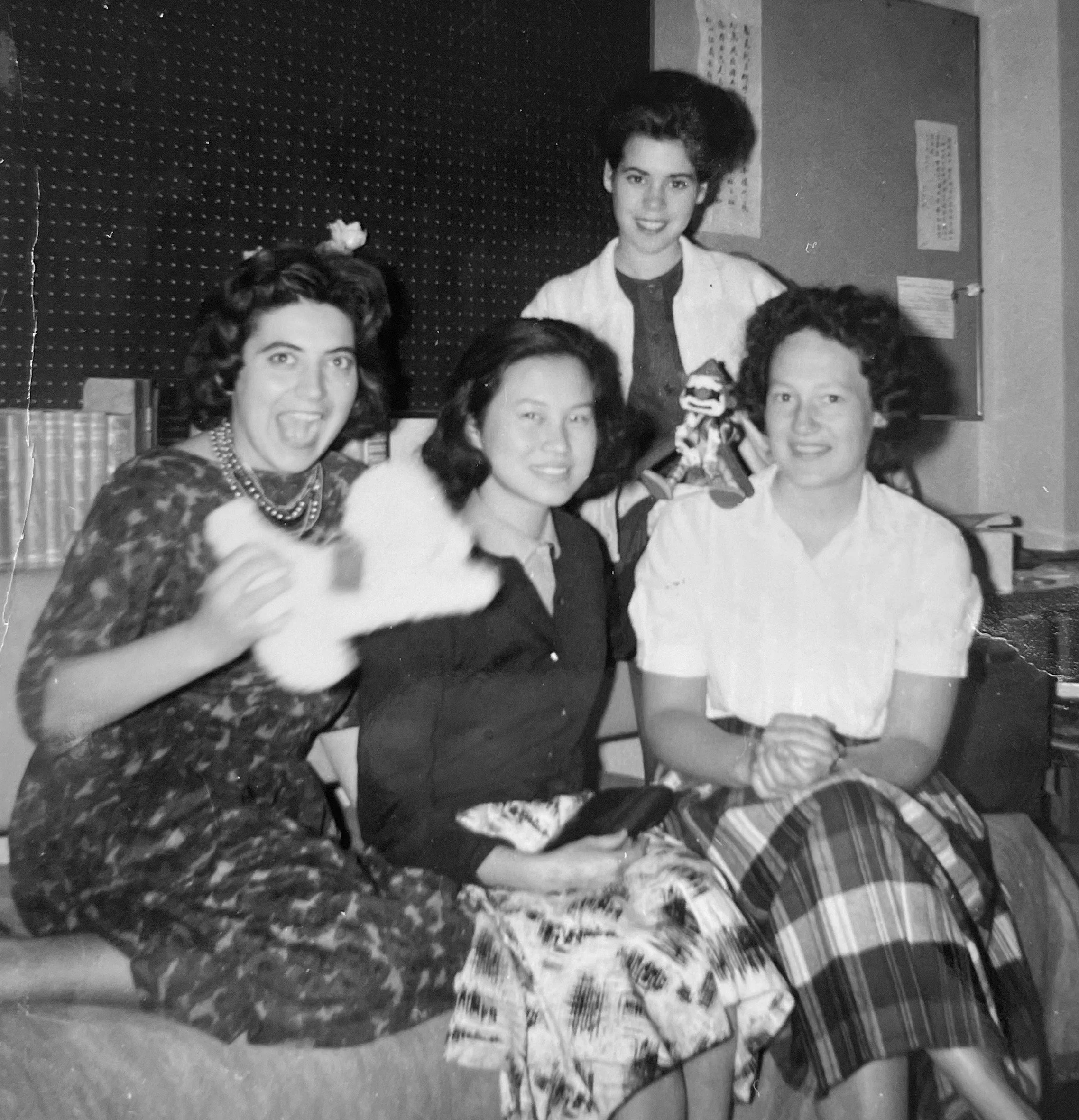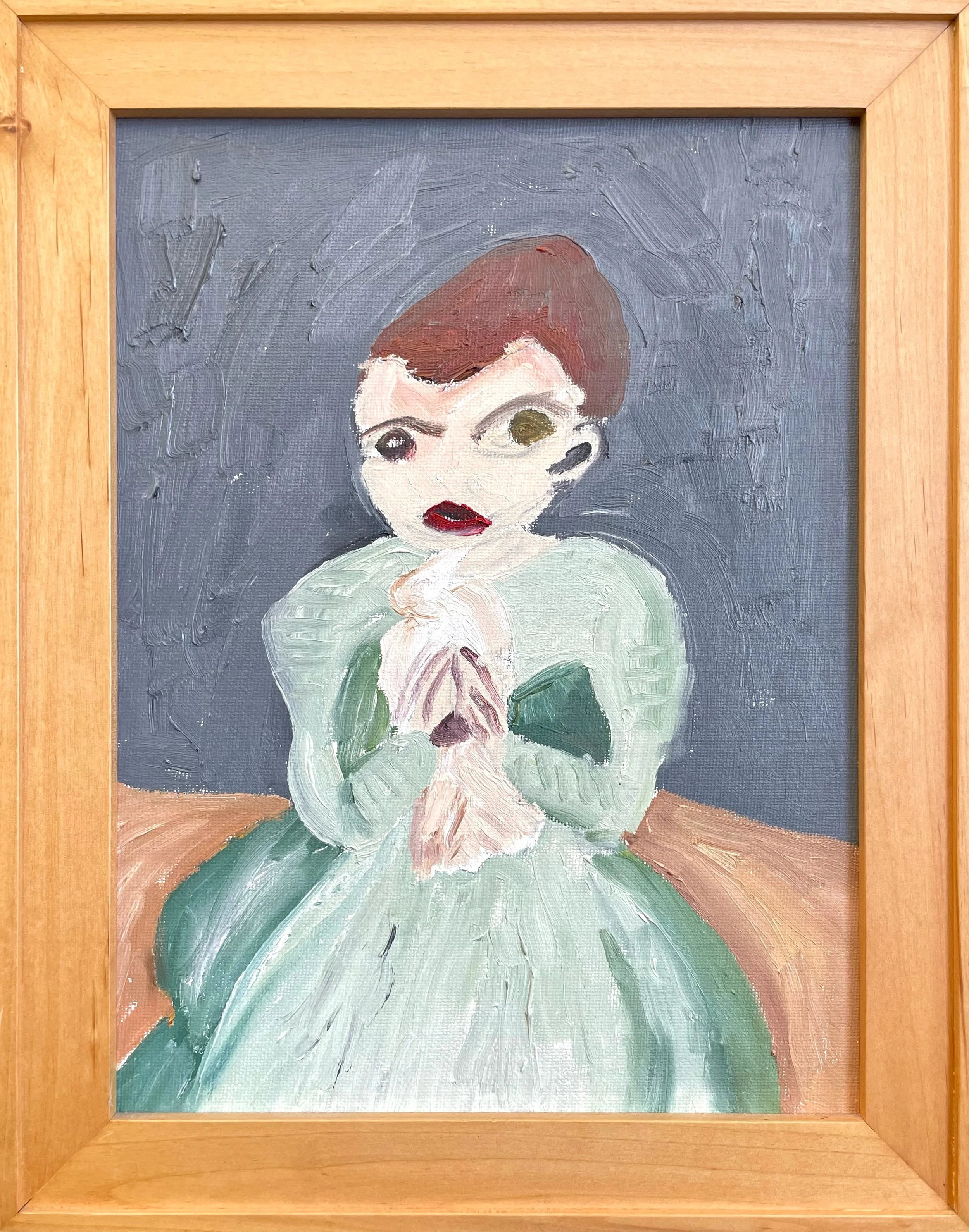Obituary of Brigida Mireles
Brigida Mireles breathed her last on August 18, 2023. With her husband Ray at her side, her eldest son John holding her hand and her children Kevin, Sylvia and Matthew at her bedside, she peacefully succumbed to her long battle with Parkinson’s disease. In the three years prior to her passing, Brigida struggled through losing her strength, coordination and ability to speak as the disease took its steady toll. She fought to the end however. Brigida cheerfully celebrated her 60th wedding anniversary with friends and family only a week prior to her passing.
Born on January 17, 1938 to parents Pedro Ramon Chiavassa and Brigida Isabel Navarrete, she grew up in the small town of Villa Maria in the picturesque heart of Argentina. At age ten, this quiet, often serious young girl began regularly attending Catholic mass in the morning before school. A fervent believer, she would sing loudly in church as a young girl. Brigida sang with such intensity that one day Sister Maria Magdalena sternly suggested to her that it would be better if she sang with her mouth closed. The embarrassment of the moment didn’t stop her and her sister Bibi from laughing at the memory for years after.
This early devotion to the Catholic church stayed with her throughout her life. Her faith served her well: she met her husband, educated her children, offered community service and received solace in her final years - all through the church. As her illness progressed, Brigida welcomed the visits of St Brunos well-wishers and volunteers who came to deliver holy communion.
During Brigida’s teenage years, her parents decided that their hometown lacked sufficient opportunity for her and her two younger siblings - so they moved to the larger city of Cordoba. There they felt they’d have more chance for the family to succeed economically and for their attractive daughters to meet worthy partners. Still, as her independent, strong willed spirit continued to emerge, it soon became clear that even the second largest city in Argentina wasn’t quite big enough for her. Her parents, in the spirit of encouragement and “we don’t know what to do with her,” offered her the opportunity to travel to America if she learned English. With quiet determination, she did just that.
After studying English at the University of Cordoba, she set out to travel to the US by applying for a tourist visa. Here she was met with the first of two strokes of luck that allowed her to begin life anew in America. First the immigration officer tore up her tourist visa application and gave her an immigration visa so she could legally live in the United States. Next, when she arrived in America, the customs official informed her that she lacked the required cash necessary for her to be admitted into the country. Not to worry though, with a flash of her infectious smile, she charmed the immigration officer into waiving that requirement.
On arrival in the US in 1960, she moved in with her aunt Victoria Bozio. That didn’t last too long. In typical Brigida fashion, she set her own rules and ignored her aunt’s curfew enough times that her aunt finally told her to leave the house. Her next stop was the dorm at UCLA, where she had recently decided to continue her studies. To keep money coming in, Brigida worked as a nanny for wealthy families in the area. Most notably, she cared for folk singer Pete Seager’s children.
During this time, she took up interest in the sport of tennis. At a party at UCLA’s Neuman Center, a hub for catholic students, one of her tennis partners, Bobby Castro, introduced her to Sylvester Raymond Mireles, a UCLA student from New Mexico who was finishing up his graduate studies. After flirtations at the “devil’s punchbowl,” (the one spiked with alcohol) they agreed to meet again for a first date.
When the time came, Sylvester found himself delayed. As he arrived well past their appointed time, he saw a dejected Brigida leaving her home. When she saw him, her downturned face quickly transformed to a bright smile. The courtship was on! After a year of dating and subsequent year-long engagement, they traveled together to Argentina where, amidst much family happiness and excitement, they married in 1963.
Eager to begin her life’s work as a mother, Brigida grew frustrated when, after a year of marriage, she still had not become pregnant. Her complaints were soon quieted when in August of 1965, she gave birth to her first child, John Raymond. Another son, James Kevin, and a daughter, Sylvia, soon followed.
Into her role as mother she stepped with glee. With great love and dedication, Brigida took to all the tasks of motherhood - from arranging playdates (before such things had a name) to shuttling kids between school, music and tennis lessons to preparing a healthy family dinner each night. She ensured that Sunday Mass was never missed. Brigida always left the front door open to the many neighborhood children who’d come by to play in the lush backyard or enjoy a homemade popsicle. If anyone was a mother to the kids of the cul de sac where the family lived, it was her.
The favorite of all the family events were the day-long road trips to the beach. Each summer, Brigida would regularly load the family’s 1971 Mercury Grand Marquis station wagon with the neighborhood kids and set off for nearby Huntington Beach. There the kids would run through the hot sand and frolic in the waves. In the afternoon, everyone would gather together around a fire ring to char hot dogs and marshmallows stuck to a straightened wire coat hanger. With the kids napping in the back, she’d return everyone home safely later that evening.
All was not rosy however. In 1972, Brigida experienced her first “nervous breakdown,” an episode that sent her to the state mental hospital in Norwalk. From that difficult period came a diagnosis of bipolar disorder, an affliction that would remain with her throughout her life.
One evening in 1980, Brigida prepared the usual family dinner and added an extra plate. With a look both happy and a little mischievous, she announced that the family would be welcoming another guest for dinner. Surprised by this unusual announcement, the kids asked who was coming? Brigida maintained the mystery by sticking to her original line. Baffled, the family looked at each other trying to understand who this guest was and why the need for such mystery. Finally, Brigida broke the suspense by revealing that she was pregnant and that a fourth child would soon be joining the Mireles household.
Just in time for Christmas of that year, Matthew Peter did indeed attain membership to the Mireles household. Though the first three children had grown into their teenage years and no longer needed the same level of motherhood attention as in previous years, Mathew allowed Brigida to continue on in her preferred role as mother. In later years, it wasn’t unusual for the family to joke that “mom would keep having kids if she could.”
Besides her welcomed duties as mother, Brigida exercised her creative spirit through various arts and crafts, her preferred media being painting. Her favorite subjects proved to be landscapes and portraits of her children and grandchildren. Though she was primarily a light-hearted representational painter, some of her work took on deeper tones. Her impressionistic self-portrait from 2018 speaks to a more emotional, conflicted version of herself than she portrayed elsewhere in her work.
In the final years of her life, as Parkinsons left her unable to speak or to walk unassisted, Brigida remained at her art table, either painting or coloring as she was able. A determined artist, she continued to practice and learn to play piano - despite the fact that her limbs often flailed away with Parkinson's induced anguish.
A 60 year resident of Whittier California, Brigida is survived by her husband Sylvester Raymond, her children John Raymond, James Kevin, Sylvia Brigit Ann and Matthew Peter, and four grandchildren, Analia, Pauline, Paloma and Luca. Her younger sister Bibiana Benvenuto also survives her. She is preceded in death by her father Pedro Ramon, her mother Brigida and youngest sibling Ramon.
My mother’s greatest success lay not in climbing tall mountains nor painting masterpieces of art nor amassing vast wealth. Her success flowed from her deep love for her children. By forever wrapping us in her motherly love, she kept bright the embers of curiosity and creativity - enabling us to live according to our dreams.
John Raymond Mireles




